If you’re here for a detailed, transparent, honest, and experience-based SEMrush review, you won’t be disappointed.
No, Wait! Don’t buy SEMrush, yet. I’m sure you’ve read enough “reviews” which are actually just a sales-pitch.
I guarantee you, this won’t be the same.
I’m not saying it’s the best SEO tool.
On the other hand, I’ve been using SEMrush for nearly 4 years now.
Hence, I’ll simply discuss its features in detail throughout this piece.
Go thorough this review, see if it fits your needs and goals, and then decide if you should, or shouldn’t go with it.
Just to keep you going, know that it boasts of billion-dollar clients such as HP, Amazon, eBay, Vodafone, Forbes and quite a few others.

Before we go deeper into this SEMrush review, an intro maybe?
Table of Contents
- Semrush Review: What is SEMrush?
- SEMRush Review Final verdict- Is SEMrush worth it?
- SEMrush Pros and Cons
- SEMrush Pricing and Refund
- Domain Analytics
- Keyword Overview
- Backlink Analysis
- Link Building Tool
- Traffic Analytics
- Organic Research
- Competition Research
- Content Marketing
- Rank Tracking
- Social Media Management
- SEMrush Site Audit Tool
- Advertising Suite
- SEMrush Sensors
- SEmrush Reports and Exporting data
Semrush Review: What is SEMrush?
I’ll keep it brief (I promise).
SEMrush is an all-in-one marketing and SEO suite.
It’s not limited to SEO as is often perceived.
Rather, it also offers advanced solutions for social media management, reporting and ad research!
Over 45 tools are offered. These being the primary:
- Keyword research
- Competition research.
- Domain analytics.
- Backlink analysis.
- Rank tracking.
- Ad research
- And even Social media management.
The reason I love SEMrush is, it eliminates the need to purchase a dozen different tools.
I get everything that a marketing/SEO campaign needs under one roof.
I can make a baseless statement saying SEMrush is the best.
Or, I can show you the facts ( numbers). Let’s go with facts, huh?
SEMrush has the biggest databases for almost everything.
When not, it’s still in the top 3 spots.
It boasts of over:
- 6 Million users.
- 31.3 trillion backlinks!
- 20 billion keywords.
- And 809 million domains.
To put things in perspective, I urge you to go through my SEMrush vs. Ahrefs and SEMrush vs Moz comparisons.
You’ll see how SEMrush supersedes those industry leaders as far as numbers go.
But hey, numbers aren’t everything, are they?
So, let’s get down to the actual review.
SEMRush Review Final verdict- Is SEMrush worth it?
It’s a complex question, but I’ll answer it in three alphabets- Y-E-S.
(Or, I wouldn’t be such a long-term customer, would I?)
You’ve already seen the numbers.
In my personal experience, SEMrush is not the “absolute” best SEO tool.
It sure has its areas which require improvements.
But, even when I use other SEO tools, I can’t imagine completely abandoning SEMrush.
It offers nearly 50 individual tools and features.
The database is so extensive, I’ve not exhausted all its reports in 4 years!
Let’s be honest, every factor that SEO consists of, be it backlinks, content, traffic, analyzing the competition, getting the right keywords, social media and everything in between is taken care of.
Moreover, it steps out of just “SEO”, and offers a complete marketing suite. The advertising suite is of special importance to me.
But hey, it’s not possible to explain, or even understand SEMrush in its entirety in a few minutes.
Hence, if you’d like (after” actually” reading this SEMrush review), you can try the SEMrush 14-day free trial before making your commitments.
SEMrush Pros and Cons
After using it for 4 years, I’ve literally experienced everything that’s good and bad with SEMrush.
In my personal opinion, here are the pros and the cons:
Pros:
- Industry-leading database (by numbers).
- 45+ tools (SEO/ Ads / Social Media / Content).
- Easy and newbie-friendly interface.
- Mobile SERP, Keywords and domains.
- Free forever account.
Cons:
- Free trial requires credit cards.
SEMrush Pricing and Refund
SEMrush is free!
For 14 days at least.
And permanently after that (with reduced features.)
Simply put, if you wish to test the features for yourself, you can grab a SEMrush 14 day trial right now.
I’ve even shown the steps (with screenshots) on how to get the SEMrush free trial.
If you’re back here after the free trial is over, or are just wondering how much does SEMrush cost, well here goes:
It offers three paid plans:1
- Pro: $99.00/month.
- Guru: $199.00/month.
- And Business: $399.00/month.
There’s a 7-day refund policy on all the plans.
Which SEMrush plan is best for you?
If you’re just starting out, the Pro or the Guru plans (if you have multiple projects) work best.
The business plan is the perfect choice for agencies or larger groups, preferably with some already revenue-generating projects (either your own, or of your clients).
Regardless of your budget, I’d ask you to NOT pay for SEMrush right away.
Always start with the free trial. You can always upgrade later.
Anyway, let’s (finally) get started with this SEMrush review.
Domain Analytics
I primarily use it for competitor analysis.
However, you totally can use it for your own domain as well.
It gets you a detailed insights into the primary aspects of the domain you search for.
Here’s a screenshot of a search result:
(I’ll be using Nescafe.com for all the examples on this SEMrush review. Why? Well, everyone loves coffee, don’t you? And no, Nescafe hasn’t paid me to do this).
The data it gets me includes:
- Traffic (both organic and paid).
- Backlinks
- Top keywords (Both organic and paid).
- Traffic from each keyword.
- Display ad data.
- Authority score.
- SERP features.
- SERP rankings.
- Competitors (with a comparative competitor map!)
Okay honestly? That’s most, if not all the data I’ll ever need to understand a domain.
The Authority score gives me an average idea of the domain’s strength .
I also get the total organic search, and paid traffic that the domain is getting.
There’s also a chart displaying the top countries by traffic.
For the backlinks? It shows me the total number of links, their type, and attribution. The Referring domains and also the anchor texts.
The top organic and paid keywords, as well as rankings on each search page (1-10/10-20 and so on) are displayed.
The main competitors (both paid and organic), as well as a comparison-graph between the domain and its competitors is shown.
And hey, there aren’t many SEO tools which also include Display advertising data (not even Ahrefs)! SEMrush does.
So, no. of ads, keywords, publishers, the landing pages, and even ad text as well as graphic creatives are shown!
(Read the “Advertising suite” section on this SEMrush review for details).
In a nutshell?
Even when I’m short on time, or don’t need to get to the core of things, this one page gets me enough data at a glance.
Or, I can click on the “view details” under any of the data-tabs.
This shows me complete, detailed and historic data available for the domain.
Keyword Overview
I guess we all agree on the importance of keyword research, don’t we?
With any keyword research tool, what do you primary search for?
The most accurate CPC, search volume, and difficulty, isn’t that right?
Does SEMrush deliver those? We’ll see.
Here’s a standard result-page for a keyword search on SEMrush:
So, I get the:
- Volume (Both global, as well as country-specific).
- SEMrush keyword Difficulty.
- CPC
- Com.- Denotes Paid competition.
- Number of SERP results.
- Available SERP features.
- Product listing ads.
- Other ads.
Okay honestly? That’s quite a bit of data.
SEMrush also offers these “country” and “device” filters.
So, I can choose specific countries and devices I need the keyword data for.
On the same page, it also shows “Keyword variations” for my primary keyword.
Then, it also displays “question keywords”.
This helps find more phrases and keywords which I might’ve otherwise ignored.
SEMrush Keyword Magic Tool
On the Keyword Overview page, there’s a tab titled “related keywords”.
You can click there to reach the Keyword magic tool.
It’ll show you a complete list of all the related keywords for your seed (primary) keyword.
The list displays CPC, competition, difficulty, volume and every other metric that you’d need.
Basically, you can search for a keyword, and get thousands of other potentially profitable keywords.
These are LSIs you can either include in your content, or just build a new website on.
If you’re not an absolute beginner, you’d love the advanced search filters offered by the SEMrush Keyword Magic tool.
As the screenshot shows, you can filter for:
- Broad match/ exact match
- Word count
- Competition level
- CPC
- Paid competition density
- SERP features
- No. of results in SERP.
So, you wouldn’t be fishing in the dark.
Rather, you’d get exactly the kind of keywords which you believe you can rank for.
Keyword Manager
It’s basically a “list”.
You can save all your favorite keywords in the SEMrush Keyword Manager.
For each keyword, the basic keyword data including the following is shown:
- Volume
- CPC
- Difficulty
- SERP features.
But, what impressed me is the fact that it also shows “estimated potential” for each keyword.
Meaning, the % of clicks I can expect from a certain keyword is displayed as well.
Then, the total search volume for all the keywords in my list, as well as the average difficulty is shown.
It also displays a list of the top competitors for each keyword.
In a nutshell, it’s like a personal dairy. It helps filter keywords and finalize the ones actually worth working on.
Backlink Analysis
One of the most important feature that SEMrush offers!
This being a SEMrush review, let’s be objective and look at the facts (again, numbers).
It crawls 17,280,000,000 URLs/day, and has a database of 1,401,000,000+ referring domains.
(Honestly? I never counted the zeroes, it’s in the trillions).
I’ll keep it simple, I enter a domain in the search-bar, and here’s what it shows me:
(You can manually select the search-mode. Either search the entire domain, a specific URL or only a sub domain).
So, I get access to:
- The number of backlinks.
- Referring domains.
- Authority score.
- Monthly traffic
- And Keywords.
See those “Referring domains” and “Backlinks” graphs?
They show me the increase/decrease in these two factors over time for the domain.
Scrolling down, I get the “Categories of Referring Domains”.
The percentage-share of each category too is shown.
Then, there’s another “Top anchor” section.
It also has tables and graphs showing me:
- Authority score of the RDs (Referring domains).
- Types of backlinks (text/image/form/frame).
- Link attributes (follow/nofollow/ UGC/ Sponsored).
- TLD distribution
- Top countries.
- Similar profiles (competitors).
- And Top pages (by number of backlinks).
The detailed backlink report includes additional data for each individual link, which includes:
- Authority score of the link-source.
- of external links from the source.
- of internal links on the source.
- Anchor text.
- Target URL (for the domain I entered).
- First & last seen dates.
- Link type and attribute.
If you entered a competitor’s domain, you get their top (actually, all) backlinks in seconds!
You can also filter to see only specific type of backlinks. Choose from the type/attribute/new or lost backlinks.
You can click on the “Anchors”, “Referring Domains” “Referring IPs” and other tabs on the backlink overview page.
They provide a detailed breakdown of each of those aspects.
E.g. the “Anchors” option shows me all the anchors the site has ever used.
The “Top anchors” are shown separately.
Then, it shows me the total number of backlinks and RDs for each anchor text.
I can click on any anchor-text to check links specific to that anchor.
Bulk Backlink Analysis
Imagine this, backlink report on up to 200 domains, in a single click!
That’s exactly what this feature offers.
Here’s what you get:
Even at a glance, without any further screen-hops, it shows:
- The no. of backlinks
- No. of RDs.
- Authority score of the domains.
- Monthly traffic
- Follow/Nofollow links.
- No. of links, and % based on link-type (image/text/form/frame).
This honestly is one of the fastest, yet most detailed backlink reports I’ve ever generated using any SEO tool.
I honestly can’t say I’m not impressed with the SEMrush backlink checker tool.
Everything (literally) that a backlink report should have seems to be included, wouldn’t you agree?
Link Building Tool
It’s one of those features which alone more than justifies the pricing plans and dominance of SEMrush as an SEO leader.
Automated, quality backlinks, for free. That’s what this feature will get you.
It finds “domain prospects” for you. These are domains you can and should build links from.
Multiple types of link opportunities are displayed. These include:
- Keywords: This shows the domains which have been selected because of keyword relevancy.
- Competitors: These domains are shown because your competitors have links from them.
- Mentions: These are the mentions of your brand/website/product without a link.
- Lost backlinks: These are links you had, but lost at some point in time.
Okay, honestly? These are some of the easiest links to get. You wouldn’t be approaching random domains but only those which either had history with you, or are highly relevant.
Once you choose the domains you need links from, SEMrush automatically shows you the E-mail IDs of the domain owners.
While it’s already impressive, that’s not all. It then suggests an E-mail template which can be customized. Moreover, it has “placeholders” so you only craft the E-mail once and send it to hundreds of E-mails in a single click.
Once the E-mail has been sent, SEMrush then tracks deliveries, opens, and received replies.
In a nutshell, this feature provides a complete workflow from not knowing what to do, to getting SERP-boosting links.
Traffic Analytics
You need to know how much traffic your competitors are getting?
Which devices get them the most traffic?
What’s their bounce-rate maybe?
This is some of what the Traffic Analytics talks about.
Here’s what the dashboard looks like:
It shows me the monthly visits on the domain.
The “Unique visitors” also indirectly tells me the no. of returning visitors.
The total pages/visit, average visit duration, and bounce-rate too included.
The Traffic Analytics page also displays mobile vs. desktop traffic share, as well as the traffic sources.
As in, is it direct traffic? Referral traffic? Search/social/paid traffic maybe? A graph tells me that.
There also is a traffic-breakdown list based on the countries.
What impressed me was its “traffic journey” feature.
It shows me the source domain, source type (direct/social media/referral etc.), exact traffic number and % share for all the traffic that the domain receives.
So I know exactly who’s sending traffic its way.
I liked the all-encompassing data overview.
As in, it’s not limited to just the “number of hits”, but rather, includes every bit of information related to traffic.
Thus, it also tops the list of best Website Traffic Estimator.
Organic Research
I use this when I need the top-performing keywords for a domain.
Or to get an estimate of its traffic value.
It displays:
- The keywords (and their effect) on a domain.
- Traffic
- Traffic cost
- Branded and Non-branded traffic.
Notice that “Organic Keywords Trend” graph?
It shows me the growth in the number of organic keywords for the domain.
I can click on the “view all organic keywords” option to get more details.
I get a complete blueprint of the domain’s top keywords, the amount of traffic they’re pulling, volume for that keyword, difficulty, CPC and everything else!
If I click on the “Positions” tab, I get a complete list of each of the pages on the domain, and their ranking position on search engines.
Position-changes is another tab which shows me the shift in positions for the domain’s pages.
Lower on the page, I get a list of all the organic keywords that exist on the domain.
Need the keywords for which this domain recently changed positions?
There’s a “Top position changes” chart displaying exactly that.
A “SERP Features” section shows me all the different SERP features available to the search engines for the domain.
The page also brings me the top pages, top subdomains, and competitors.
In a nutshell? That’s enough data to build a complete digital marketing plan.
Competition Research
SEMrush competitor analysis is without doubt where I spend most of my time.
Being honest, nearly every SEMrush tool can be used for spying on your competition.
Simply enter the domain of your competitors and you’re set.
However, it does offer a few primary competition research tools:
- Keyword Gap
- And Backlink Gap.
Keyword Gap
Keyword Gap tells you the keywords which are common between you and your competitors.
Or, it can be used to find keywords you aren’t ranking for, but your competitors are.
Enter your domain, and the domain of up to 4 competitors.
The best part? You don’t even need to know who your competitors are.
As soon as you enter your domain, SEMrush auto-suggests your top competitors.
Once you do, this is what you’ll be seeing:
For starters, notice the Venn diagram? It shows the keyword overlaps between all the domains.
The table shows the following metrics:
- The keywords’ ranking position for each website (including yours).
- Volume of the keyword.
- CPC
- And Difficulty.
Honestly? This isn’t impressive so far, or actionable.
I mean you and your competitors share keywords, so what?
This is where the “filters” come to the rescue.
Wait, I’ll explain:
- Missing: Keywords which need the most attention. All your competitors are ranking, but you aren’t.
- Untapped: Similar to “missing” keywords, however, only one of your competitor is ranking.
- Weak: Keywords where all your competitors rank higher than you.
- Strong: Keywords where your ranking is better than all the competitors.
- Shared: Common keywords for which all the domains (including you) hold some rank.
- Unique: Keywords unique to you, no other competitors rank.
Let’s talk a bit of the Backlink gap.
Backlink Gap
You’d love if you can magically find backlinks your competitors have, but you don’t. Right?
That’s exactly what Backlink Gap facilitates.
The interface is exactly identical to Keyword Gap.
Simply enter your domain, and the 4 competitors.
This is what you’ll get:
Let’s see what’s shown?
- Matches: This is the no. of domains, out of the entered domains, which have at least 1 backlink from the website.
- AS (Authority score): The strength of the link-source.
- No. of links for each domain.
It’s not just limited to “numbers”.
It also shows the individual links to each domain.
Furthermore, the no. of external/internal links from the source, type of link, and first & last seen dates are displayed as well.
Additionally, “New/lost” and “follow” filters are available, so only those links can be viewed specifically.
Now, most SEMrush competitors do have similar features.
However, they mostly focus on the “competition”.
In other words, the data for your own domain isn’t included.
Sure, that’s effective as well.
But, comparatively, SEMrush wins.
Simply because it not just shows you what your competitors are doing, but also what you and your competitors share and are equal at.
[Bonus tip]: Even when you’re using the backlink research feature,
Content Marketing
Content is King, or well, at least a minister in the SEO parliament, wouldn’t you agree?
SEMrush offers a number of tools which help make your content better.
These include:
- SEO Writing Assistant.
- SEO Content Template
- Topic Research
SEMrush SEO Writing Assistant
As the name suggests, it helps you with your content.
So basically, you only need enter your target keyword(s).
Then, paste your content on the writing assistant.
It then generates the following suggestions:
- Related keywords. (Also shows the volume and difficulty for each keyword).
- Link-changes: Identifies links which could be improved and singles them out.
- Tone of voice: Detects the “tone” of your articles (formal/casual/neutral).
- Originality: A built-in plagiarism checker shows you the % of copied content, and the original sources.
- Words and reading time of the article.
- Readability of the article.
I get it, this doesn’t guarantee SERP boost.
But hey, it’s the little things that matter, right?
The SEMrush Writing Assistant is also available as a Google doc extension, or a WordPress plugin!
This facilitates real-time suggestions without you having to copy-paste content.
What I didn’t like?
The plagiarism checker has monthly limits.
I mean if I’m paying, I’d have loved if the feature was truly unlimited.
But well, it’s not a deal-breaker.
SEO Content Template
Let me explain it to you simply, this feature crafts a complete “digital marketing plan” for you.
Simply enter your target keywords, and you get:
- Your top 10 competitors for each keyword.
- Related keywords you should include in your content.
- A backlink list of all the sites you need to acquire backlinks from.
- Text length: An average length of the top 10 competitors.
- Readability: The average readability score of the top competitors.
- Meta description length: The optimal length for your meta descriptions.
- Title recommendations: Keyword frequency and length for the title.
So, even when crafting your very first content, you already know what you need to do, without much manual effort.
Topic Research
Out of blog post ideas? Don’t have the right keywords maybe?
I feel you. I’ve been there more times than I can count.
Well, SEMrush’s “Topic Research” lets you enter a keyword, and get content ideas for it.
Here’s a standard results-page:
For starters, a number of seed keywords are displayed.
Once we select the seed keyword most appealing to us.
Then a number of subtopics are displayed.
The overall difficulty as well as topic efficiency is shown as well.
Quite a few headlines and “questions” are shown.
How you use this information depends on your own creativity and skills.
There also is an “Explorer” feature.
It shows a number of subtopics, Facebook engagement on the topic’s top article, no. of backlinks and total shares.
Honestly? The explorer is a bit confusing. So let’s not get deep into that.
Rank Tracking
“Ranks” are literally why we’re doing all of this, isn’t it?
I personally believe that tracking your current ranks is one of the best ways to improve it.
Here’s what a standard rank-tracking page shows:
This data includes:
- Visibility: An average idea of the number of tracked keywords ranking on Google.
- Estimated traffic: based on the tracked keywords’ current ranks.
- Average position: of all the tracked keywords.
- Top 3/10/20/100 keywords: Shows the number of keywords which entered/exited these ranking positions.
- Positive impact: It’s a table showing a list of keywords which gained ranks.
- Top competitors: based on the exact tracked keywords. Their ranking is shown as well.
Extremely detailed ranking distributions (showing recent differences in ranks, and traffic) can be viewed by clicking on the “ranking distributions” link.
You can even add devices and locations, to track ranks specific to those devices and locations!
The “Competitors” tab lists all your competitors ranking for your tracked keywords.
Their current rank, change in rank, estimated traffic, and average position is displayed as well.
Social Media Management
Didn’t I mention earlier in this SEMrush review that it’s an all-inclusive project management tool?
And that extends beyond SEO or competition analysis.
SEMrush’s social media toolkit offers the following tools:
- Social media poster.
- Social media tracker
- And Social media ads.
Social Media Poster
Put simply, you can manage the following social media accounts for now- Facebook, Youtube, Twitter, Linkedin, Google My Business, Instagram and Pinterest.
And then, you can do the following:
- Schedule posts (just upload posts, set a publishing time).
- Track competitors (just add a domain name, SEMrush auto-detects company profiles).
Social Media Tracker
Once a competitor is added to your SEMrush account, the tracker is activated.
You can select a date-range for the profile you’re tracking.
And then, it shows:
- no. of followers.
- Posts/videos.
- Total engagement.
- Top content.
- And audience comparison.
Social Media Ads
Imagine this, you being able to manage and track ads without needing to log into your individual ad-managers.
Well yes, you can create ads, track ads, compare ad-performance and basically achieve automation.
The reason I’m not getting into the details?
If you run social media ads, you wouldn’t be interested in me explaining the basics anyway.
If you don’t, well, this would only confuse you.
SEMrush Site Audit Tool
If you ever wondered where to find website health in SEMrush, this is where.
Without getting into the technicalities, this is what a general site audit would get you:
So well, you get reports on:
- Errors: These are the number of issues which may prove fatal for the site and need immediate attention.
- Warnings: No. of issues which too require attention and fixing, however, do not pose very serious problems for the site.
- Notices: These too are issues but which are the least dangerous or problematic.
- Crawled pages: This box breaks down the total crawled pages depending on their health.
- Crawlability: This is the overall crawl-score which tells me how easy/hard it is for bots to crawl my site.
- HTTPS issues: This shows the health of the HTTPs certificates and issues with them (if any.)
- Site performance: This metric is the overall site performance score which includes speed, size of JavaScript and CSS scripts, errors with link redirections etc
Click on any of these metrics, and you’ll get the exact problem, as well as solutions to fix it.
Extremely detailed reports for each metric are provided.
Let’s say you’ve never used SEMrush before, or, you’ve never heard what any of those errors mean.
Even in that case, the solutions are so well-explained that you can fix the issues within minutes, with 0 technical expertise.
On page SEO checker
This is another site-audit tool which offers an overall evaluation of, and suggestions for individual pages on your site.
Offers pretty easy-to-understand results.
So, it primarily offers:
- A list of pages which can be optimized.
- Ideas for backlinks, SEO, user-experience, content, SERP features etc.
A line-bar shows your current traffic, and the traffic-potential if all the ideas are implemented.
(This being a SEMrush review, I have to be honest. The “potential” is extremely exaggerated and theoretical.)
Although, the tool is so streamlined, even the most basic users can get started right away.
E.g. if I click on “backlink ideas”, it shows me the URLs which need immediate backlinks.
Then, it also suggests backlink-sources which will benefit me.
And then, a list shows me all my competitors who have backlinks from these sources.
Content length, keyword usage, semantic keywords, video usage and readability improvements are suggested as well.
The same ease-of-use can be experienced with all the other ideas.
Advertising Suite
Half a decade back, SEO and ads were two different things.
Today? I doubt any serious digital marketing project is complete without ads.
This suite is basically a compilation of Ad spy tools that SEMrush offers.
It offers four tools for now:
- Advertising Research
- PLA Research
- Display Advertising
- And CPC Map
Advertising Research
I simply enter my domain, and here are the results I get:
Let’s break it down?
- Keywords: The number of keywords for which ads are being displayed.
- Traffic from ads.
- Traffic cost: This is the monthly cost for the keywords and their position.
Then, there’s the chart which shows time-based variation in the ads.
And then if I go down, I see the exact:
- Keywords
- Position
- CPC
- Search Volume
- Traffic
- Costs for the keyword
- Cost % out of the total ad-budget.
- No. of total results.
- Competition
- And Traffic %
This is from every single keyword!
So basically, I just need my competitors domain to get a pretty solid idea of their ad-strategy.
PLA Research (Product Listing Ads).
This is another ad spying feature on this SEMrush review.
However, it’s dedicated to Product Listing Ads.
(I couldn’t find any PLAs for Nescafe, so I switched to Amazon.com for this example).
Again, the interface is absolute love and easy. I just enter a domain and it’s done!
Here’s a sneak-peek:
And again, the results include:
- Total keywords.
- Total ads.
- A trend-graph for positions and ads.
And the keyword-table gives me the following:
- Keyword
- Position
- Difference in position.
- Volume
- The product URL
- Price
- SERP
- And last update date.
I can even hover over the green “ad” icon, a small thumbnail of the exact PLA pops up!
Display Advertising
Why stop at Google ads or PLAs?
Display Ads are another major type of ads as well, aren’t they?
Again, I just enter the domain name of my competitor:
(No, Amazon isn’t my competitor, it’s just an example, obviously, do I look like a Billionaire to you?)
The results I get include:
- No. of ads.
- No. and list of publishers.
- No. and list of advertisers.
- Times seen
- Ad types
- Devices and countries.
- First & last seen dates.
Then, there’s a gender and age-breakdown.
What interests the viewers of these ads? SEMrush knows that as well.
It even has a database of all the ad-creatives used for the ads!
The number of days an image was seen too is mentioned.
It even gets me a full list of all the advertisers and publishers for the ad.
(Pretty detailed, huh?)
The visibility domination based on country, device, ad-type (image/HTML/text) too is displayed in a neat little graph.
So far? I’m impressed.
However, SEMrush isn’t done.
See that “landing page” tab in the screenshot above?
It brings me the exact landing pages being used by the domain I entered.
Even details about every individual ad (ad-creative, seen dates, no. of times seen, targeted countries etc). is displayed.
CPC Map
In simple words, it tells you the highest & lowest CPCs in specific regions.
Then, there’s a complete list of “niche/categories” based on the highest to lowest CPCs.
Another list tells you the “most expensive keywords” for the region you’ve selected.
It even “predicts” the average CPC and volume for industries for the next month.
Furthermore, it has this “compare” feature.
So, if I want to launch a new project in the “finance” industry, I can select a number of countries and regions.
Up to 5 countries can be selected.
It shows me a comparative list of CPCs for the same industry, in different countries!
Here’s the thing, SEMrush isn’t an advertising suite.
Or, it wasn’t initially.
Now? It performs equally good, if not better than some other ad-exclusive tools.
SEMrush Sensors
I didn’t wish to leave any feature out of this SEMrush review.
SEMrush sensors isn’t exactly a “tool”.
Rather, it’s an informative page.
Let’s just say it’s a SERP-Seismograph.
It monitors changes in SERPs and ranks them on a scale of 10.
Did your site lose traffic recently? Or maybe, an expected traffic spike?
Check if it’s just you, or the entire industry is experiencing the same.
It even has a “category” list. These are basically industries and niche.
The list shows the SERP movement in individual industries.
There’s also a “SERP Volatility” graph.
It monitors changes in SERP for millions of domains, and plots them on a low/normal/high/very high graph.
It basically helps you understand or spot any major changes in the search engine algorithms and react accordingly.
SEmrush Reports and Exporting data
If you’re a team/agency, you’d love this.
SEMrush allows scheduling of reports.
PDF reports are sent to multiple email IDs (set by you) on the scheduled day and time.
There’s an in-built “Template Gallery” you can choose templates from!
Templates for monthly SEO, site audit, advertising research and many other purposes are available.
What I loved is its white-label feature!
You can edit a template to its full extent.
Add your own logos, addresses, taglines and basically branding.
Your clients get a professional report, generated by “you” and not SEMrush.
An easy to use drag and drop editor is what’s used to white-label these reports.
Moreover, every single feature on SEMrush offers an “export” option.
You can export data in CSV files, excel files or at times even in other formats.
One-click exports export everything on your screen in a readable, well-formatted document!
FAQs
This SEMrush review can’t be complete without answering the most obvious questions.
(I sure had these when I first heard of SEMrush).
#1. Is SEMrush free?
Yes.
There’s a 100% forever free plan.
Simply get the SEMrush free trial offer.
Once the trial expires, if you cancel your subscription, you get downgraded to the SEMrush free account.
It’s valid forever.
#2. Does SEMrush offer refunds?
Yes, You get 100% refund if claimed within 7 days.
#3. Is there a SEMrush discount code 2024?
A 100% free discount code is applied to this link.
You get a 100% free trial for 14 days using the link.
Even after cancellation, you can use SEMrush for free, forever, on a limited plan.
#4. How frequently is SEMrush’s database updated?
Technically, it’s every second. It has an automated and routine update process. Different databases are updated at different intervals.
#5. Where does SEMrush get its data from?
Being the massive data-powerhouse SEMrush is, it’s only natural for it to collect data from multiple sources.
Each of its features/reports get data from different sources.
Some of which are:
- Clickstream data providers (for traffic analytics).
- Third-party data providers (for search-engine data, including ads ).
- SEMrush crawler (Crawls over 17 billion webpages daily for backlinks!)
- APIs (Social media data).
#6. Does SEMrush include mobile-data?
Yes, it does.
Almost all the SEMrush tools offer “device” and “country” filters.
Considering how Google officially switched to mobile-first indexing just a few months back, it’s important you also get “mobile” data, isn’t it?
Hence, wherever applicable, you can select to view not only desktop, but also mobile data.
#7. What is SEMrush used for?
I doubt you’re on this SEMrush review without knowing that.
I honestly wrote the answer to this question, which became an article by itself.
And hence, here’s this shorter version:
SEMrush can be used for “everything” that you need for better rankings and marketing outcomes.
Backlink and keyword research, competition analysis, ad research, and managing social media management.
This is less than half of SEMrush’s all features and potential.
All in all, even if you’ve zero experience, you can use SEMrush with extreme ease and to your benefit.
And that shall be all for this SEMrush review folks. It did get long, but I do hope it was worth it.

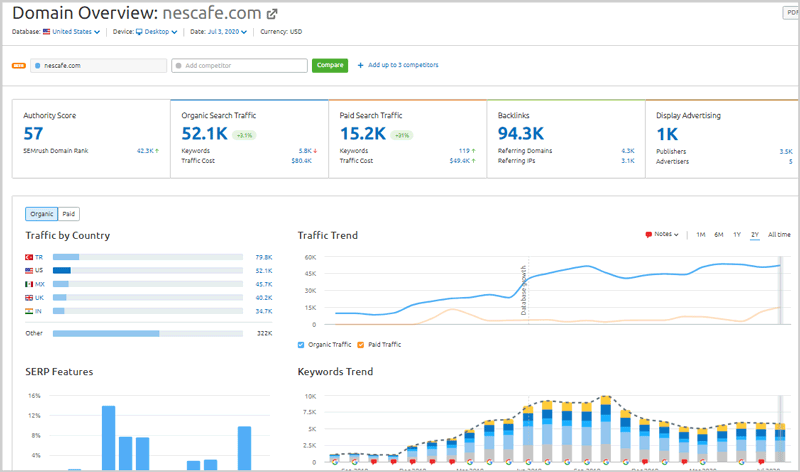
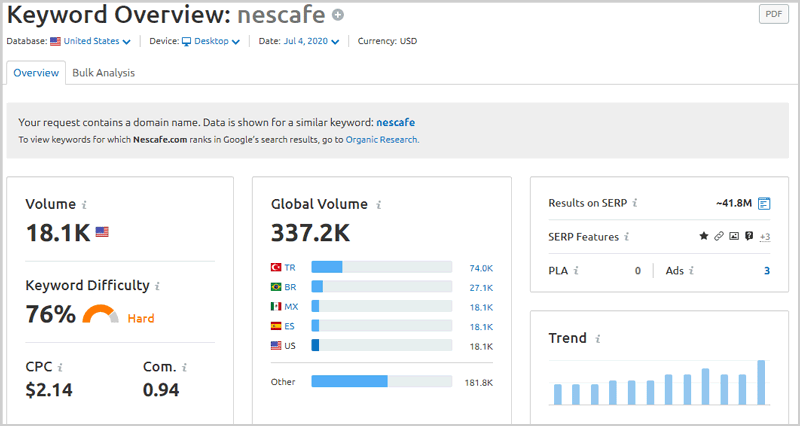
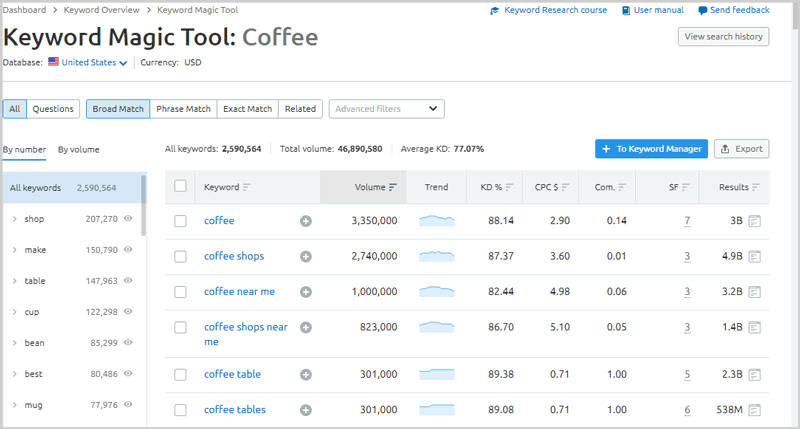

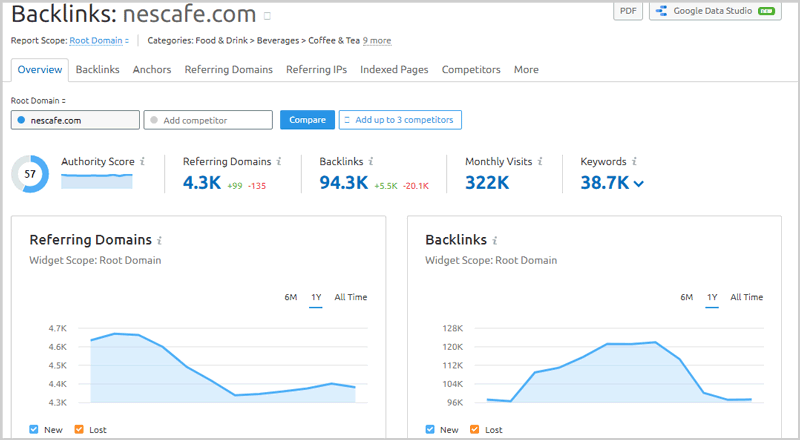
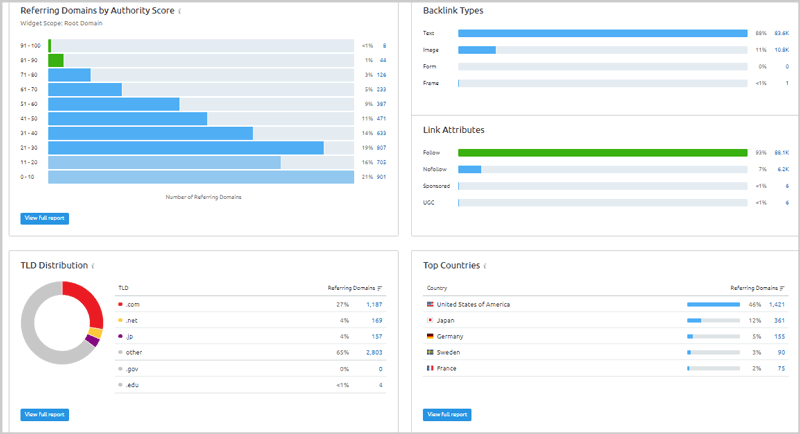
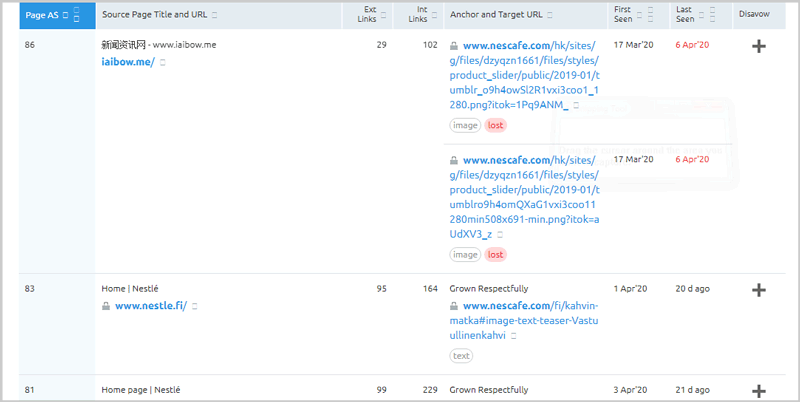
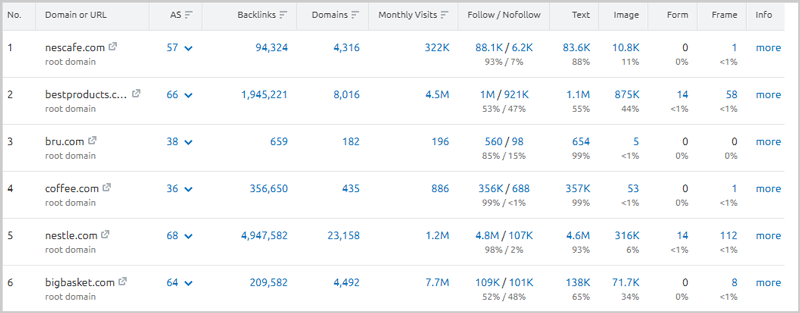
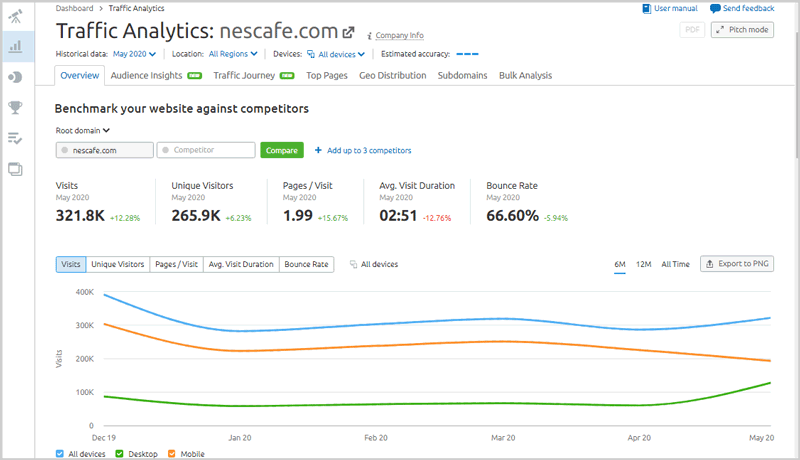
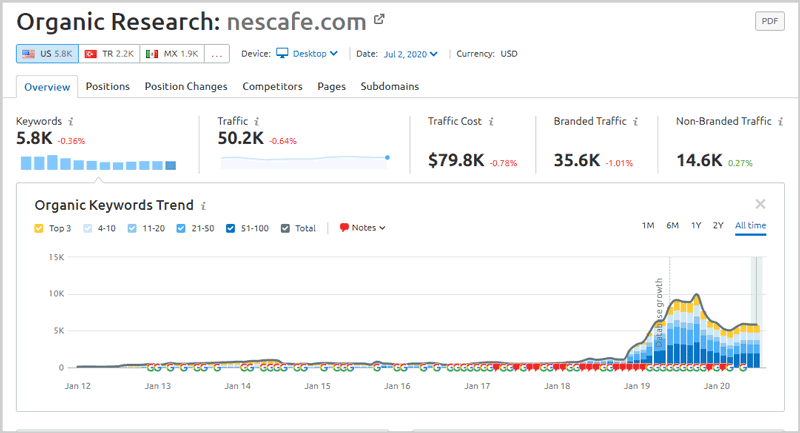
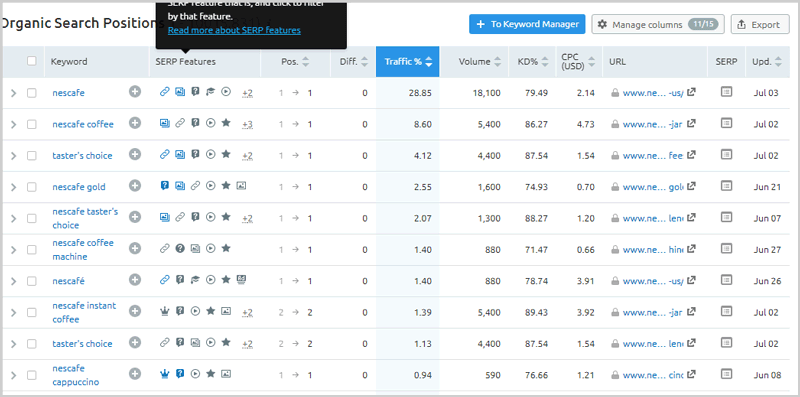
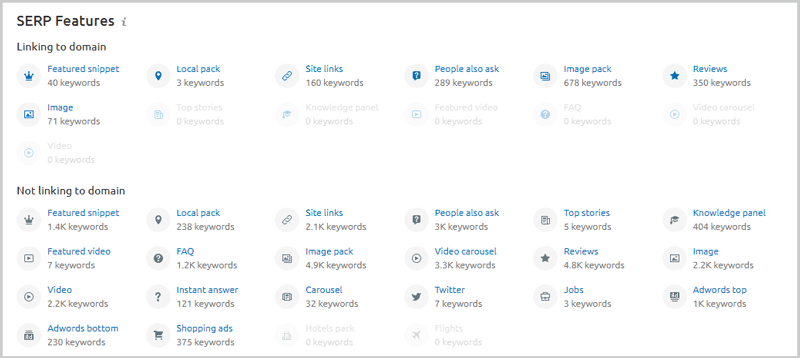
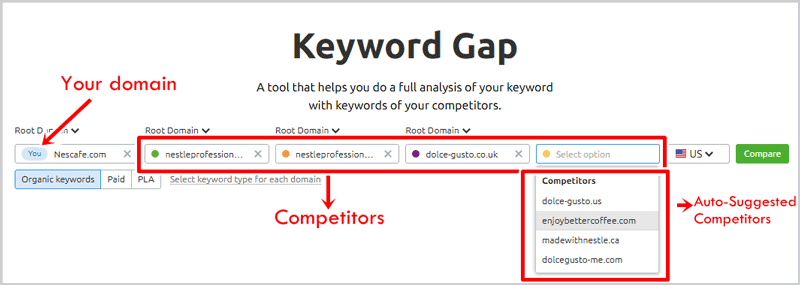
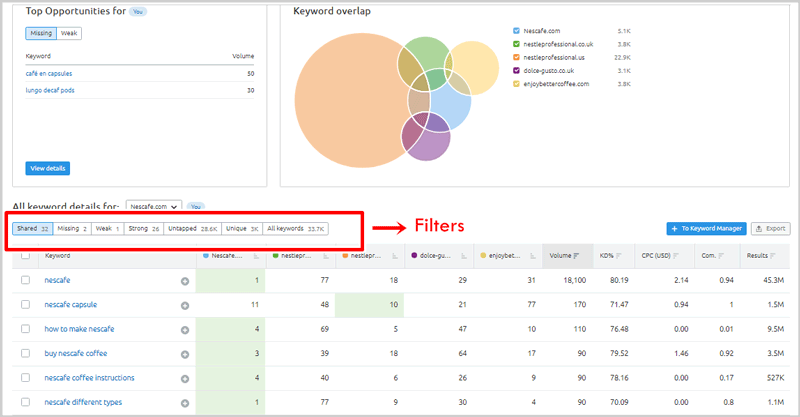
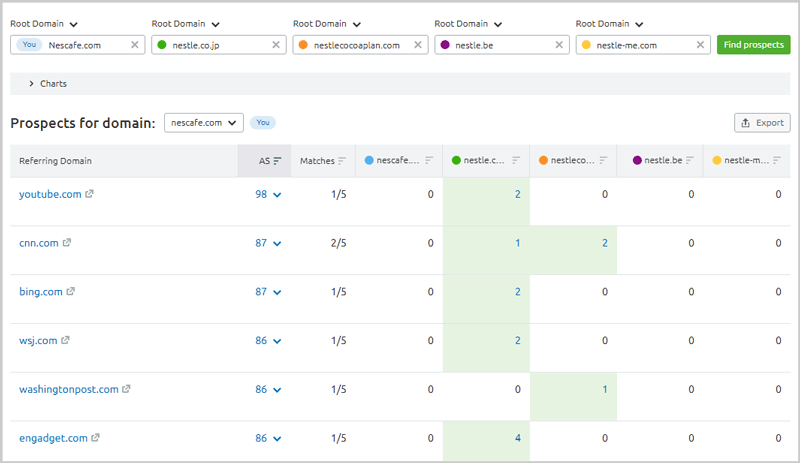

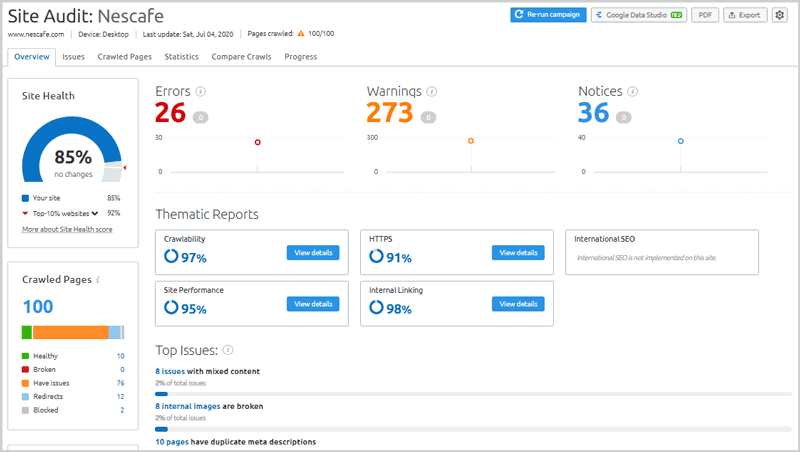
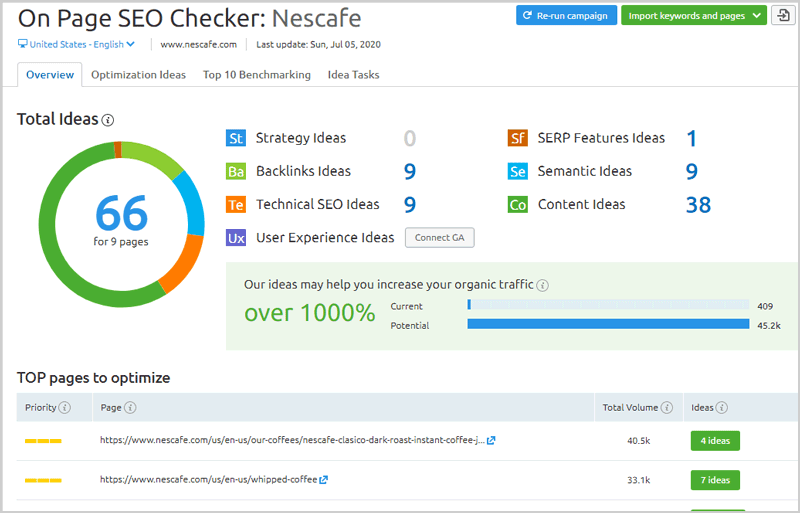
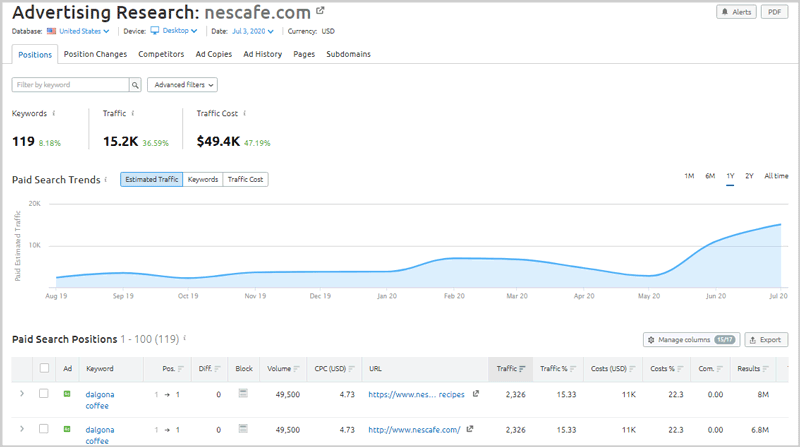
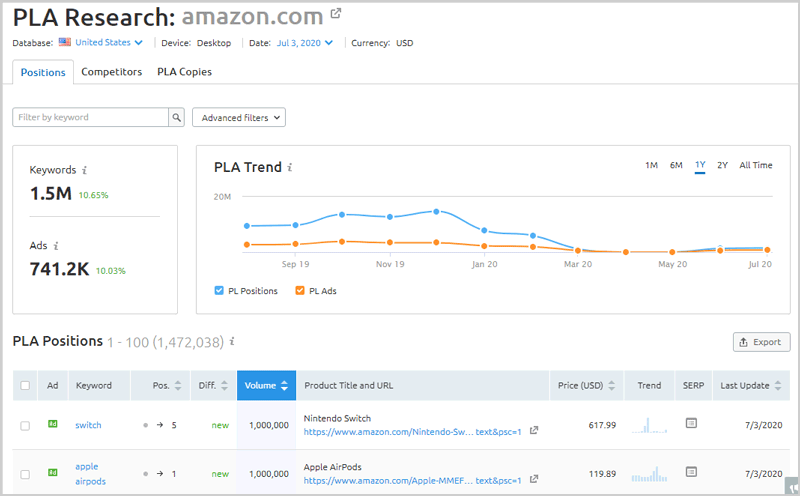
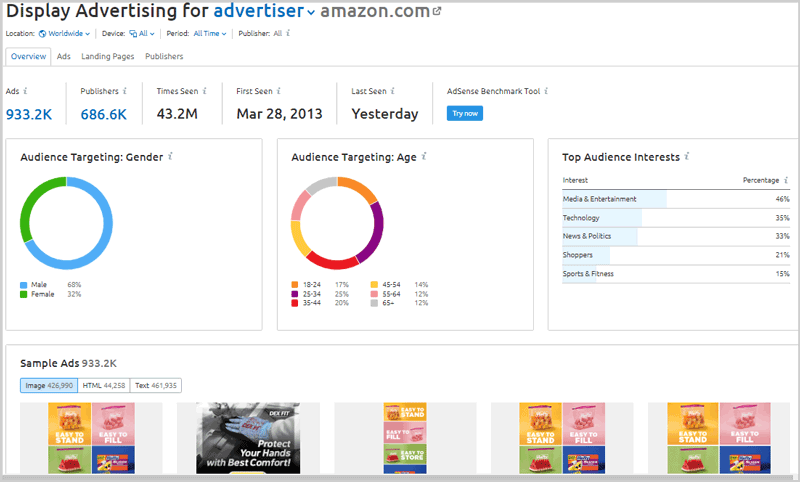
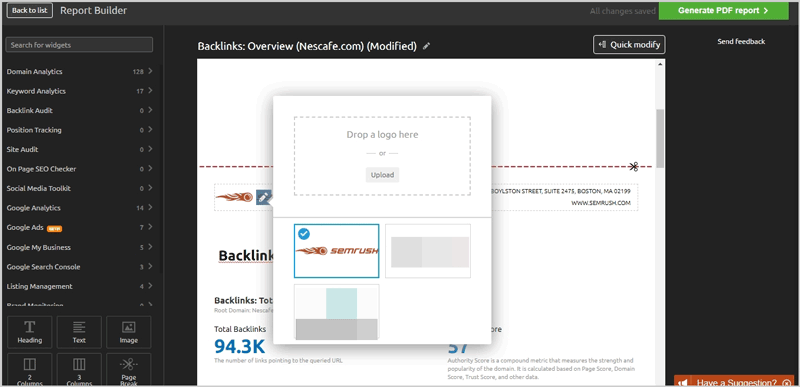

Great review of Semrush Jyoti,
One of the best and number one ways of creating a successful online business is to research an know exactly what your competitors are doing, how they’re doing it, whats working and whats not working for them. Knowing all these will enable you to know how to beat them. Thats why there is saying that “If you know your enemies tactics, you’ve won half the battle”.
However, there are so many tools out there that can be used for this research but there is no doubt that Semrush is ahead of majority of them.
Thanks for sharing mate.
This is very valuable post. thanks for sharing this information. Please advise SEMrush is different from openlinkprofiler? Or this is similar kind Tools?